(8) items in your cart
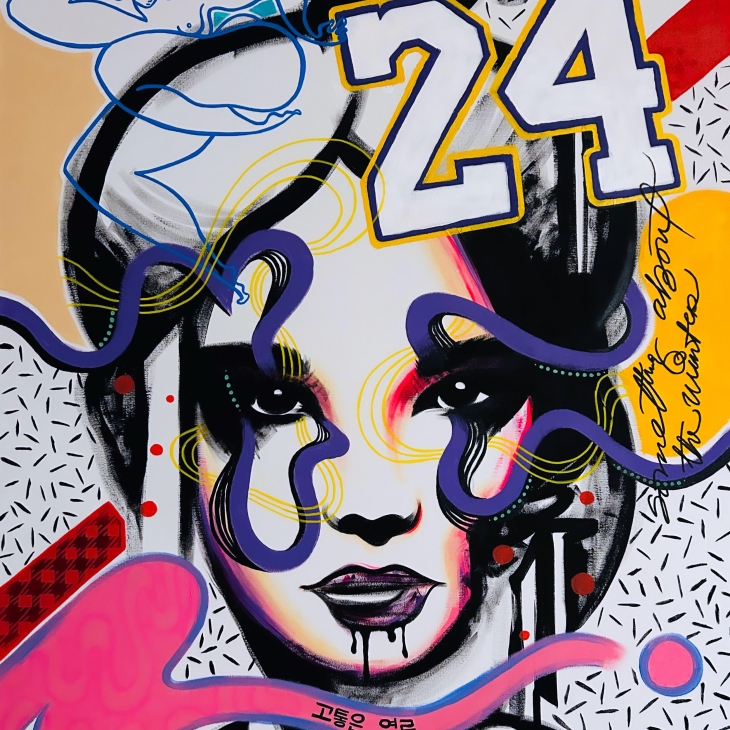
Price: €1500
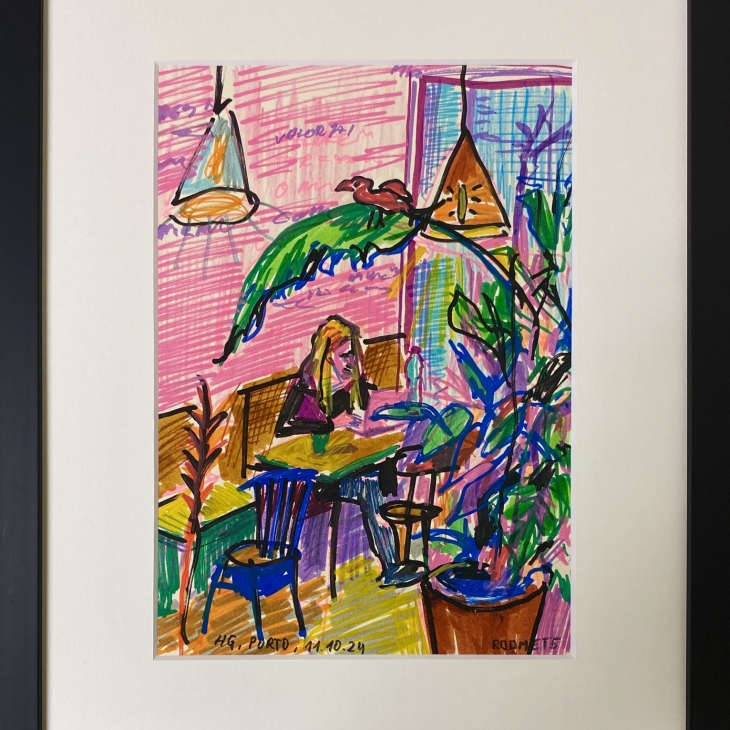
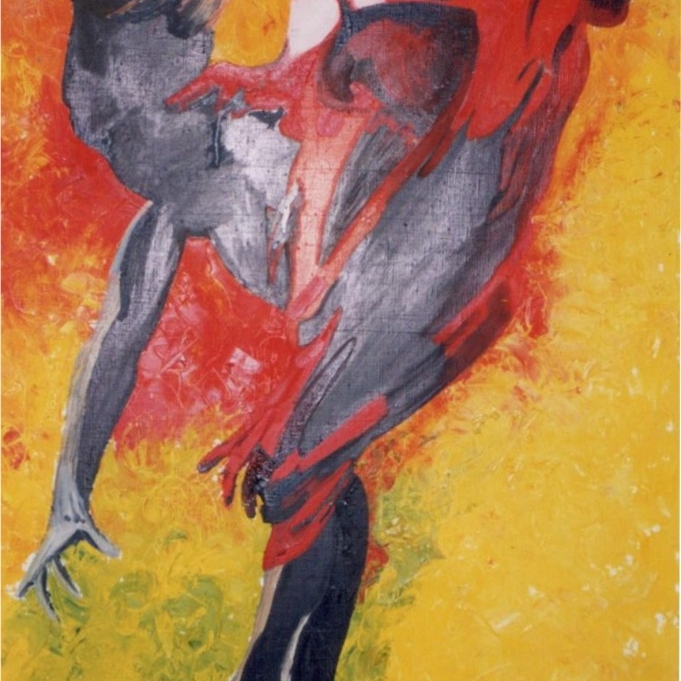
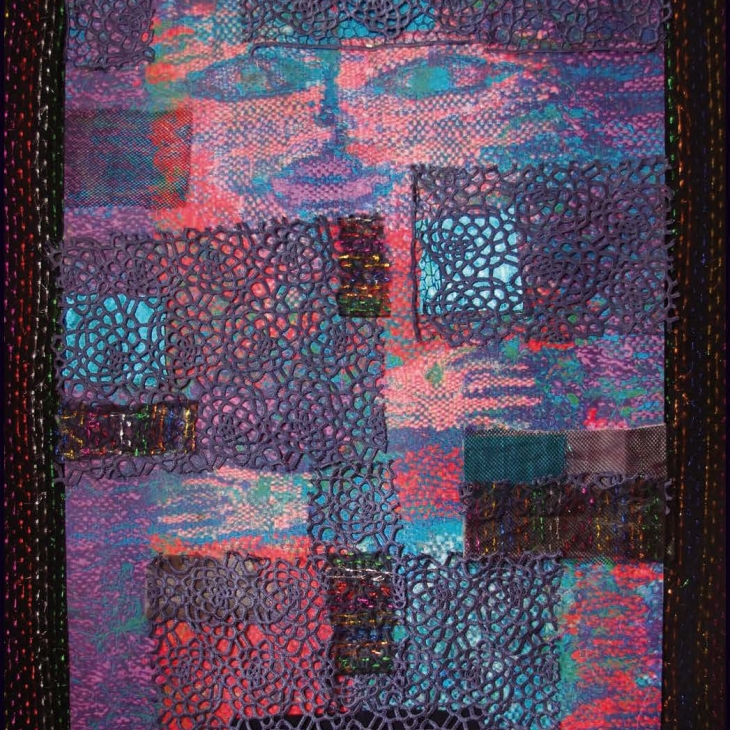
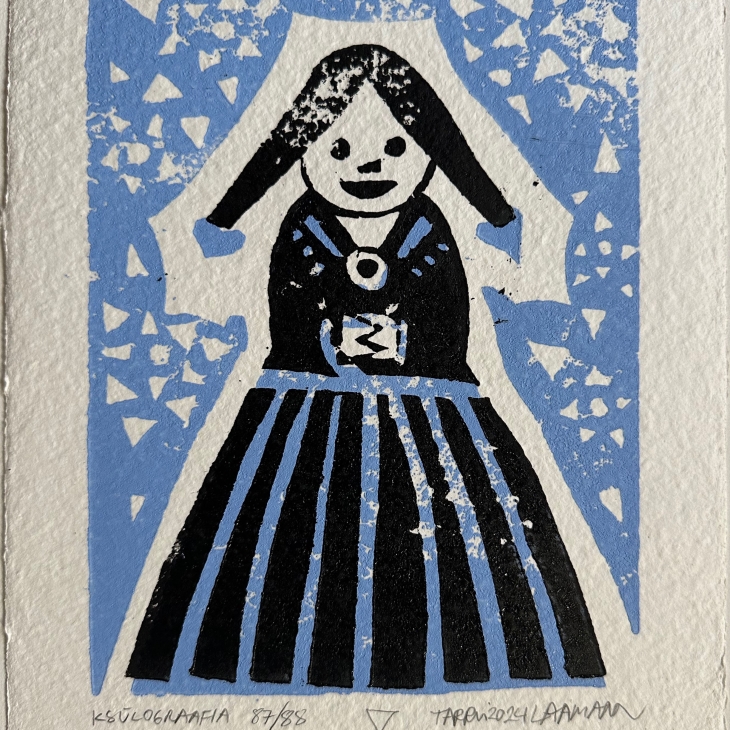
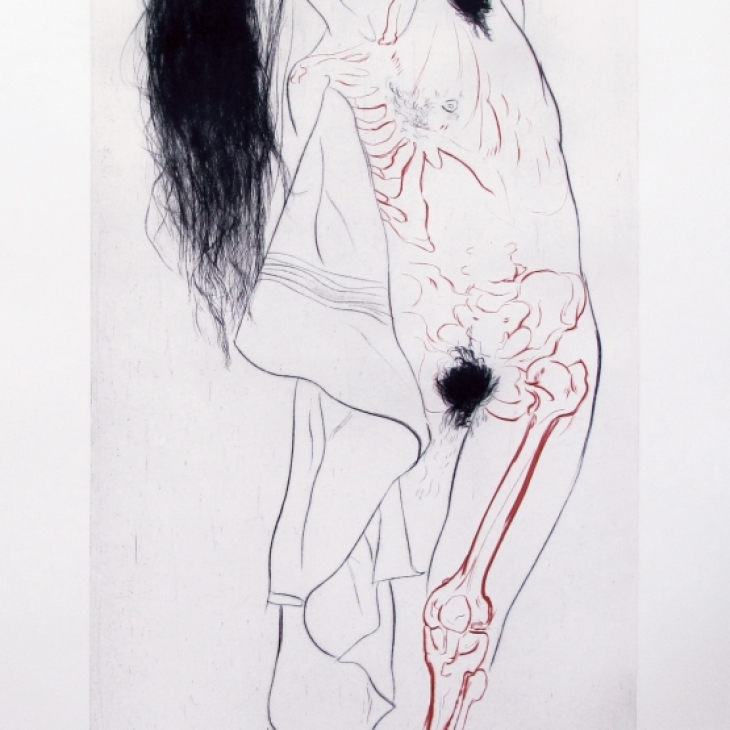


Acrylic on canvas, framed
This painting is the first piece from my graduation series “Alchemy of Puns”*. It was also exhibited at the University of Pallas degree show “LEND 2025” at Gallery Pallas.
“Human Crow” is a direct translation from the Estonian title (which is a pun) “Inimvares”. “Inimvare” in direct translation means “human ruin”, whereas “vare” means ruin. However, “vares” means “crow”. So by adding a single letter to the end of the word “inimvare”->”inimvares” it changes the entire meaning into “human crow” instead – which is also the title of the artwork.
I was burned out, exhausted, and stressed — I felt like a complete ruin of a human. Throughout the day, I often caught myself saying it — sometimes aloud to others, sometimes quietly to myself. By constantly calling myself a ruin, I was only reinforcing and deepening the problem.
During a conversation with my sister, the phrase once again slipped from my lips, but it also suddenly reminded me that words hold power. In a split second, I decided to twist what I had just said into a pun, hoping my brain wouldn’t register the original meaning at all, nor cause any more harm. From that moment on, I decided to strategically start calling myself just that. Every time the intrusive thought “I’m a human ruin” surfaced, I countered it with the pun. A crow — a bird — wouldn’t be so bad to be, because after all I’ve always dreamed of flying. Repeating such an affirmation surely couldn’t attract anything negative, could it?
Over time, this technique actually helped me break free from the negative thought pattern. I decided to paint a skull (human ruin) and crow as separate symbols — not a hybrid creature of them both. Alchemists used the skull as a symbol to represent the residue left behind during their procedures (caput mortuum), and also as a symbol of death. But death, in alchemical terms, signifies transformation — the end of one phase and the beginning of a new journey. One must move forward without fear and let go of the past, for there is nothing left to lose.
Birds, associated with the element of air, serve as messengers between the physical and spiritual worlds. Alchemists often likened the flight of birds to the human soul on its path of spiritual evolution. The crow, especially depicted with a skull, was often used to represent the first step of the Magnum Opus — calcination. It marks the beginning of the Great Work of the soul. The first step is letting go of everything that no longer serves you. That’s exactly how I felt when I began releasing negative thought patterns with the help of puns.
The background of the painting is mixed with golden pigment, as a tribute to the alchemists’ pursuit of turning something less valuable into something precious — into gold. For alchemists, gold symbolized wisdom and the presence of the divine or the universe’s creative force, both within and beyond us, above and below. This inner gold was understood as the realization that all the answers of the universe already exist within us — and that by learning to know ourselves, we also begin to understand the universe as a whole.
*My graduation work titled “Painting Series: Alchemy of Puns” explores the nature and history of puns and alchemy, and seeks connections between them and mental health.
Words hold great power in shaping our reality, but what to do when your inner voice is your worst critic? I turned to puns as a way to quickly transform what had already been said or thought into something more neutral, before the brain had the chance to even register the initial meaning.
So instead of calling myself “human decay”, or a “human wreck” (inimvare), I started calling myself a “human crow” (inimvares) instead. Over time, I hoped this would help eliminate the compulsive thought altogether, and it did! I felt like a modern alchemist who discovered a new transmutation practice.
For my final project, I created three paintings inspired by such puns: Human Crow (wordplay on human decay), Shark In The Head (on mentally ill), and Soul Hare (on wound of the soul). The alchemical symbolism incorporated into the paintings was further explained in the written part of my thesis.